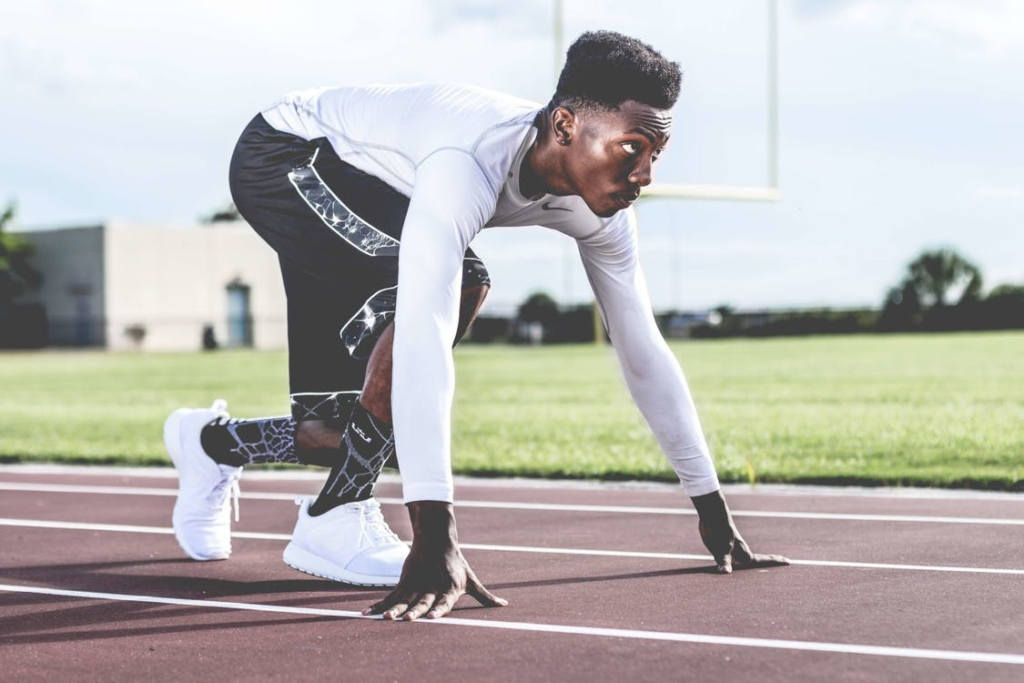There are more than 25 million practitioners of calisthenics in the US alone. A large percentage of this likely includes athletes due to its many benefits. If you’re an athlete and haven’t incorporated it into your routine, you’re missing out. Calisthenics involves using one’s own body to achieve fitness goals and a grace of movement.
Athletes need to be at the top of their game if they’re going to win in whatever sport they’re playing. They train, they practice, and they work out nearly the whole time they’re awake. It keeps them tough, and more importantly, it keeps them going. They’ll lose out on their sport if they drop the ball here. Superstar athletes spend millions on their bodies every year just because of this.
The Benefits of Calisthenics for Athletes
Superstar athletes might have the millions to spend, but unless you’re signing a lucrative shoe deal with Nike like Michael Jordan or have been in a million commercials like Peyton Manning, you don’t have millions to spend on your fitness.
You need to decide what and where to spend for your fitness regime. If you’re an athlete that wants to indulge in strength training, calisthenics is the way to go.
1. Overcomes Physical Demands of Sports
Athletes in every sport push their bodies to the limit. No matter what sport it is, it’s safe to say that all athletes face finding their heart aching, muscles cramping with fatigue, overcoming pain, and feeling mental and physical exhaustion. Sports are competition-based, and every athlete wants to be at the top, making all sports extremely physically demanding.
Calisthenics helps athletes reach the peak level of fitness and promotes it thoroughly. It can do wonders for athletes and let them excel beyond their imagination. It’s also been a favorite of German athlete Sven Kohl, who became a pioneer of calisthenics.
Many calisthenics experts are now promoting it because of the optimum fitness levels possible. Because it can help reach peak performance, it helps meet the physical demands of the sport.
2. Improvement in Functional Strength
Peak athletic performance requires an athlete to be at the top of their functional strength. Calisthenics is the stepping-stone to achieving optimal functional strength. Calisthenics requires the athlete to work on different muscle groups.
It’s bodyweight training with many core and muscle strengthening exercises. Those who do it regularly have seen a significant improvement in their strength regardless of whether they’re athletes or not. Athletes need that optimum functional strength and should opt for calisthenics to achieve it without putting a strain on their muscles.
3. Intramuscular Coordination
Calisthenics involves grouping many muscle groups together and working them. A bonus from this is the increased intermuscular coordination. It develops strength and increases muscles mass. Since the changes aren’t only on the surface but also at the neural level, it improves muscular coordination along with inducing power development.
Athletes can reap many benefits from adding calisthenics to their training regimes. They’ll experience a boost of power and achievement and have a well-conditioned form.

4. Muscle Endurance
Athletes competing at the highest levels need the best muscle endurance. According to research, progressive calisthenics training improves muscle strength and thickness. Humans have two types of muscles: slow-twitch muscles and fast-twitch muscles.
Slow-twitch muscles are built for endurance, and they’ll contact when a person is frequently moving like in sports. It also takes a lot of effort to tire these muscles out. Cyclists use these muscles in their sport a lot. On the other hand, fast-twitch muscles are a bit different because when used frequently, they produce bursts of energy, albeit shorter bursts.
Even though they have endurance capability, they’ll tire quickly. Calisthenics is a strength training exercise that can impact muscle fibers. It builds up the fast-twitch muscles and gives an extra burst of power that can help an athlete push toward the finish line.
5. Reduces Risk of Injury
Have you ever seen football? Those athletes take collisions head-on. Professional athlete or a weekend warrior, there’s a good chance that you might have had an injury. Sports injuries are an inevitable reality, but calisthenics can help reduce the risk of injury significantly.
Calisthenics includes resistance training that puts a load on the joints. This increases bone density which will decrease bone density. As a result of strength training, tendons and ligaments also become stronger. From this, they’ll be more flexible, and the risk of injury is reduced.

6. The Convenience
The grind doesn’t stop, even in the off-season. Sure, you can take a vacation or two, but the moment you get lazy, your hard work goes down the drain. This also doesn’t mean you keep up an insane workout routine. So, what can you do to stay in shape while giving your body a little break from the high-intensity workouts required of an athlete? Try calisthenics, of course.
Calisthenics offers many benefits, one of which is its convenience. You don’t need a gym to do it, nor do you need any equipment. It’ll also incorporate exercises you’ve probably already done while working out, so you can pick the ones convenient for you and build a daily routine around them. This will keep your body moving and maintain the much-needed muscle endurance that an athlete needs.
Learn More Through High-Performance Coach and Expert
For athletes, it’s more than a fitness regime; it’s a way of life. If you’re interested in learning more tips on how to train like a cyborg to sharpen your mental focus and build better physical endurance as an athlete, follow serial entrepreneur and biohacking expert Jean Fallacara.
Moreover, you can also read his book, Neuroscience Calisthenics: Hijack Your Body Clock, to know how to improve your workouts. Reach out to us for more details on neuroscience calisthenics strength training!
